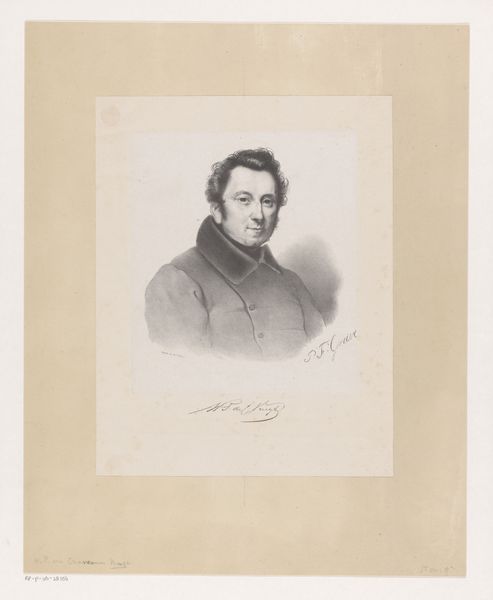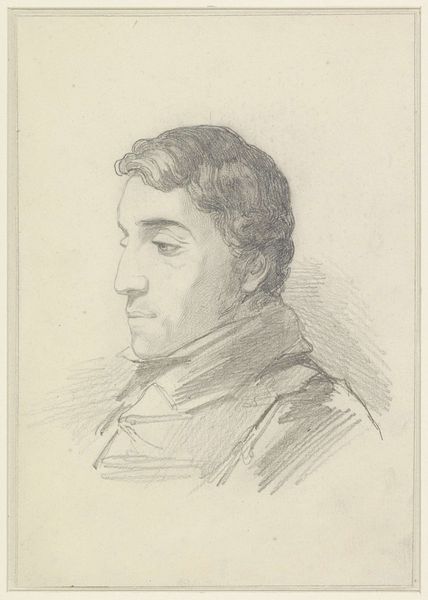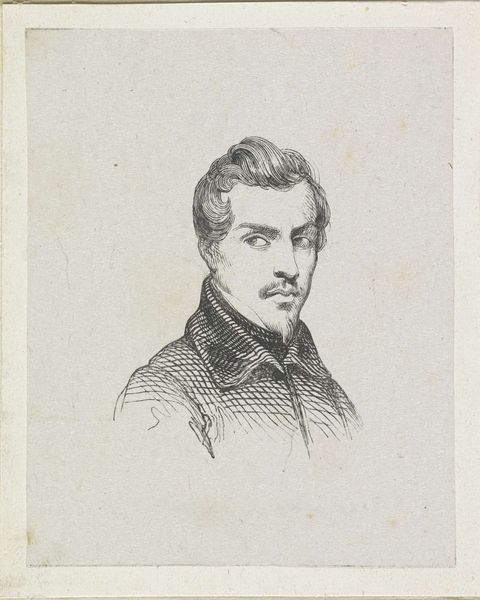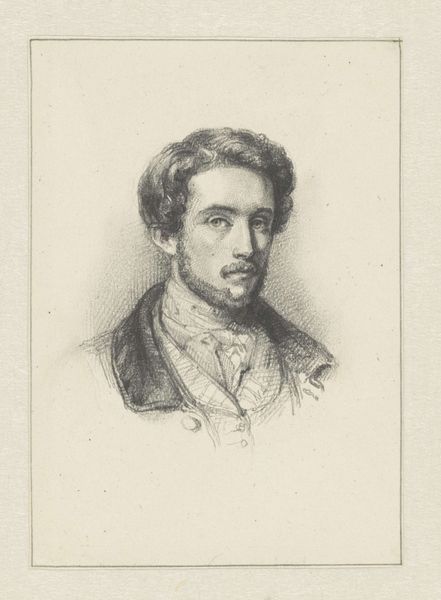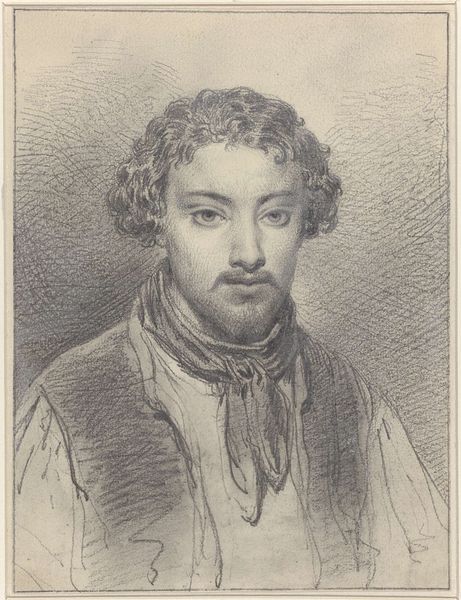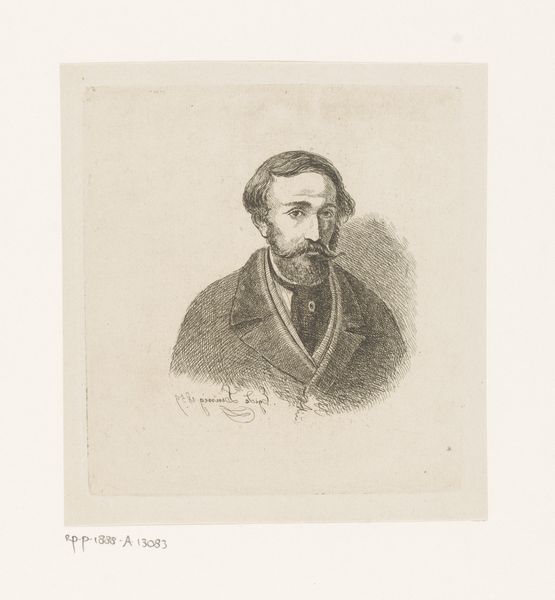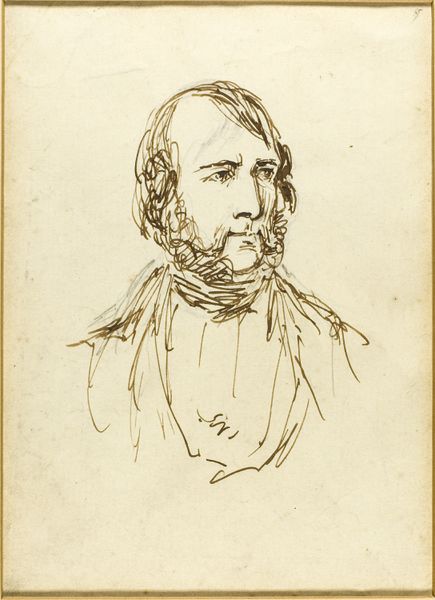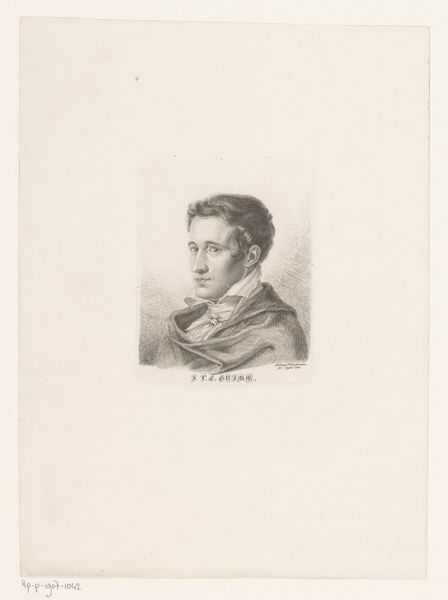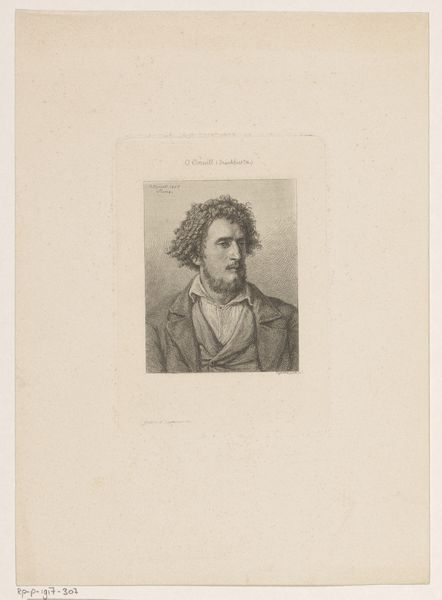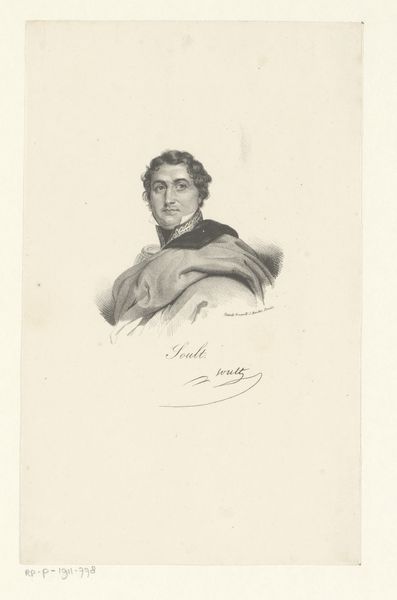
drawing, print, graphite
#
portrait
#
drawing
# print
#
figuration
#
romanticism
#
graphite
Dimensions: sheet: 9 7/8 x 7 15/16 in. (25.1 x 20.1 cm)
Copyright: Public Domain
Editor: Here we have Adolf Senff's "Portrait of a Young Man" from 1834, currently residing at The Met. It’s a graphite drawing, and it strikes me as very serene, almost melancholic. What do you see in this piece? Curator: Immediately, I see a study in nascent identity, rendered through a lens of Romantic idealism. The cloak draped around him isn’t merely clothing; it’s a symbolic embrace, perhaps of nature, or the burden of the self. Consider the early 19th century context—didactic portrayals were often staged through calculated compositional choices and carefully deployed motifs. Note his gaze; averted yet present. Do you think it expresses introspection, or perhaps a hesitant vulnerability? Editor: I'd say introspection, definitely. He doesn't quite meet the viewer's gaze. Curator: Exactly. The eyes often act as portals to the soul. Here, Senff invites us to observe, but not fully intrude. This partial revelation speaks to the psychological exploration prevalent in Romantic art. The sideburns framing his face, were fashionable, also acting like quotation marks on the face to enhance the narrative. Editor: So, the very style of the portrait, even something as small as his sideburns, communicates something beyond just physical likeness. Curator: Precisely! Every element contributes to a coded visual language. Even the choice of graphite allows for subtlety, a kind of hushed revelation that mirrors the subject’s inner state. Consider the weight each deliberate mark holds – in rendering cultural memory as an artifact that speaks volumes. Editor: I never would have thought about it that way, especially the drawing medium adding to the mood. Thanks! Curator: Indeed. It is the dance between subject and symbolic articulation that creates such resonance, reflecting how artists consciously shaped meaning through visual symbols of the period.
Comments
No comments
Be the first to comment and join the conversation on the ultimate creative platform.


